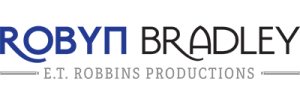Conversational Copywriting: Don’t underestimate “chatty” writing
Dear Copy Bitch: I’m banging my head over here because, once again, I’ve encountered a client who thinks writing web copy and feature articles in third person is “right” and that “conversational” is unprofessional. I know you advocate conversational copy, so how do you handle this with clients?
—Frustrated Copywriter in Boston
Answer: I feel your pain, Boston Copywriter. This writer does not believe that one should write in third person because the tone one creates is stuffy and aloof. (See?)
And I’d give my favorite George Clooney poster in exchange for the name of the first person who perpetuated the myth that conversational and professional are mutually exclusive terms.
You can be serious, professional, and conversational (next time you get “junk mail” for a charity, read it and consider the tone); fun, professional, and conversational (ditto for junk mail trying to sell you a new cell phone service or credit card); and annoying, unprofessional, and conversational (my neighbor, when he’s trying to sell God-knows-what from his balcony at 2am).
I wish I had a magic wand that I could wave over clients and it would remove any memory of the damage done by well-meaning high school teachers. “Formal writing” is fine for legal briefs and dissertations (I use the word “fine” loosely, because I think both of these items would be easier to read if written in a conversational tone). How many people go, “I’m in the mood for a good dissertation to bring with me to the beach?” No one that I can think of.
I’m also willing to say this: conversational copy is more important now than ever before, thanks to social media. You can’t have effective social media without having conversations, and you can’t have effective conversations if you’re not, well, conversational. As far as I’m concerned, this goes for ALL industries, even those notoriously “formal” ones.
So what can you say to your client? How can you prove your theory that conversational is more effective? The best way is by conducting a split test, also known as A/B testing, because the proof will be in the conversions.
For web pages, this works really well, and it’s cost effective. Set up two landing pages for a particular campaign and have one page be in “client speak” (let the client write it–just edit it for typos) and the other be in your winning “conversational tone.” See which one converts better.
One thing you should keep in mind is this: it’s hard for some people to let go of rules that they’ve been holding onto since the sixth grade. Either accept this and applaud their baby steps or start working with those folks who recognize the beauty and effectiveness in a well-placed “bullshit.” (Guess which direction I’m taking my business in?)
Learn more about my no-BS approach to marketing writing here.
